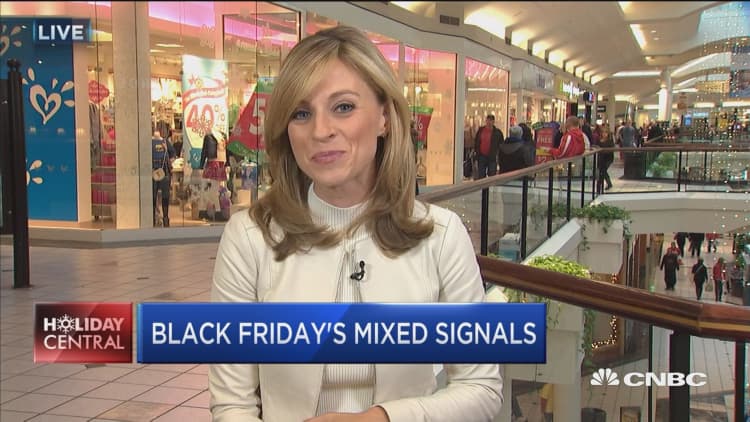A scroll through Instagram can become a costly experience for Aadil Seedat, a search market executive, as his shopping list of luxury goods grows.
But it's not the presence of branding or logos which informs these purchases, rather the desire to "replicate (the) lifestyle" of the influencers he follows, as he explained to CNBC via telephone.
According to recent market research, Seedat is typical of today's incarnation of a luxury goods consumer, looking past visible branding and instead relying on nouse to identify quality. This is all with the intention of mimicking a way of life as a whole, rather than ownership of a specific product.
More consumers are opting for luxury handbags with little or no visible branding. Statistics released last month revealed that one third of the handbags purchased in the U.S. in the year ending June 2016 did not have a visible logo, according to data from The NPD Group, an information gathering firm.
"Consumers want to be one in a million, not one of a million," Marshal Cohen, chief industry analyst at The NPD Group told CNBA via telephone. For Cohen, the data revealed that consumer tastes are now more "personalisation-oriented," favouring "products that are more modular."
The anti-branding trend pans across generations. Sales of handbags with no visible logo were highest amongst those aged 50 and older, but the phenomenon gained the most traction with Generation Z – those aged 17 years and under – whose unit sales of handbags with no visible logo rose 8 percent year on year.

According to The NPD Group's data, older millennials, aged 25-34, and Generation X, aged 35-49, also increased their purchasing of designer bags with no visible logo.
The style has been pioneered by luxury brand Céline, as well as Giorgio Armani and Hermes amongst others, said Silvano Vangi, luxury buyer and creative director at online luxury fashion retailer LUISAVIAROMA. "The concept keeps the focus on the product, it's a discreet luxury that is really based on the tailoring and fabric," he told CNBC via e-mail.
Adding a different dimension to Cohen's analysis, Richard Cope, senior trends consultant at Mintel, chalks the anti-branding movement up to consumers "want(ing) more discreet, more experiential products." Cope told CNBC via telephone that consumers today "don't just define luxury in terms of material goods."
Cope cited Mintel data from March 2016 which charted only 15 percent of survey respondents specifying luxury goods to be those featuring visible logos. The most popular definition associated with luxury was high quality, non-massed produced goods, backed up by 42 percent of those asked.
Speculating on the psychology behind anti-branding, Cope said that "brands now have multiple price entry points and so are diluted psychologically, (they) no longer bring mystique." Cope added that consumers want to invest in products that they perceive as not widely available or mass produced. Items that are customised, limited or unique in some way are relevant for this reason.
Vangi added that anti-branding creates its own exclusivity, appealing to a "select group of people who are very luxury oriented and appreciate minimalism." He said that items including the Loewe Puzzle bag, the Max Mara Manuela coat and Manolo Blahnik's shoes are "definitely amongst the most popular" for the trend.

The anti-branding trend is moving eastwards, with the stereotype of Chinese middle class shoppers in pursuit of big brands also starting to slip. Mintel's data revealed that 44 percent of Chinese consumers said that they preferred experiential luxury such as spas and resorts rather than material items.
Anti-branding may seem counter-intuitive in today's increasingly visual culture. But, according to Cope, "social media allows us to brag about where we are (and) what we're doing as well as what we have," meaning that logos are no longer the key status symbol they once were.
The connection to lifestyle resonates with Florence-based LUISAVIAROMA. Camilla Gennari Feslikenian, social media manager at the firm, told CNBC via e-mail that for its Instagram account, "we have found that it's better to avoid anything with a logo, as it keeps the post as 'real and lifelike' as possible." LUISAVIAROMA, a multi-brand retailer, said that "using images with visible logos or immediately recognizable brands can often take away from that."
While competition between brands may now seem difficult, given this shift towards unmarked goods, Cohen suggested that "it comes down to the product itself and its relationship with the consumer." For Cohen, shoppers want to "pick a personality, then pick the components."

